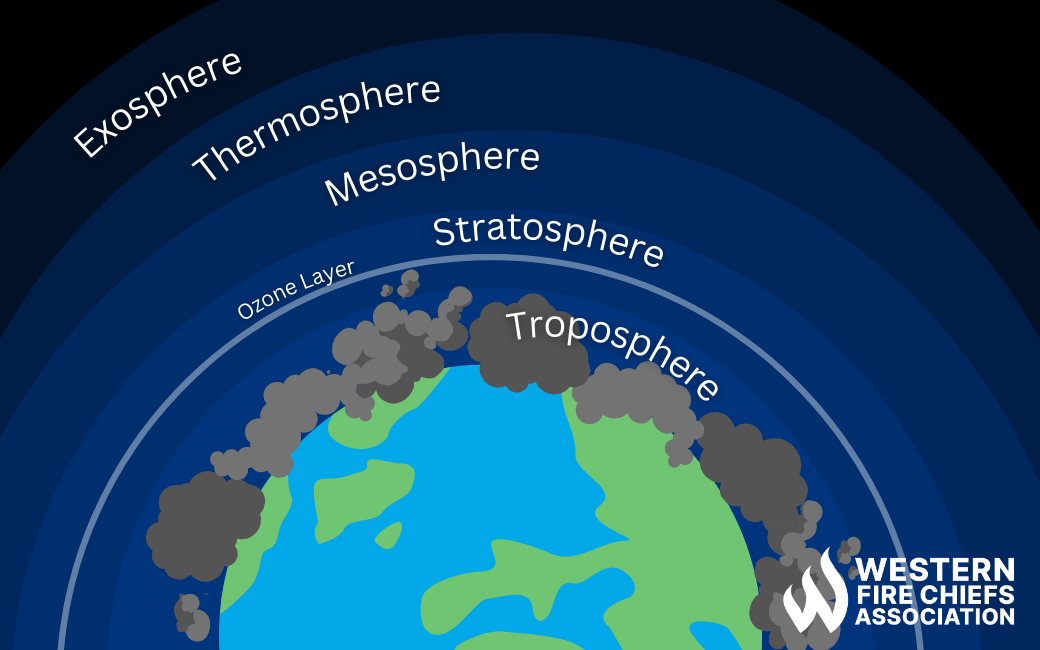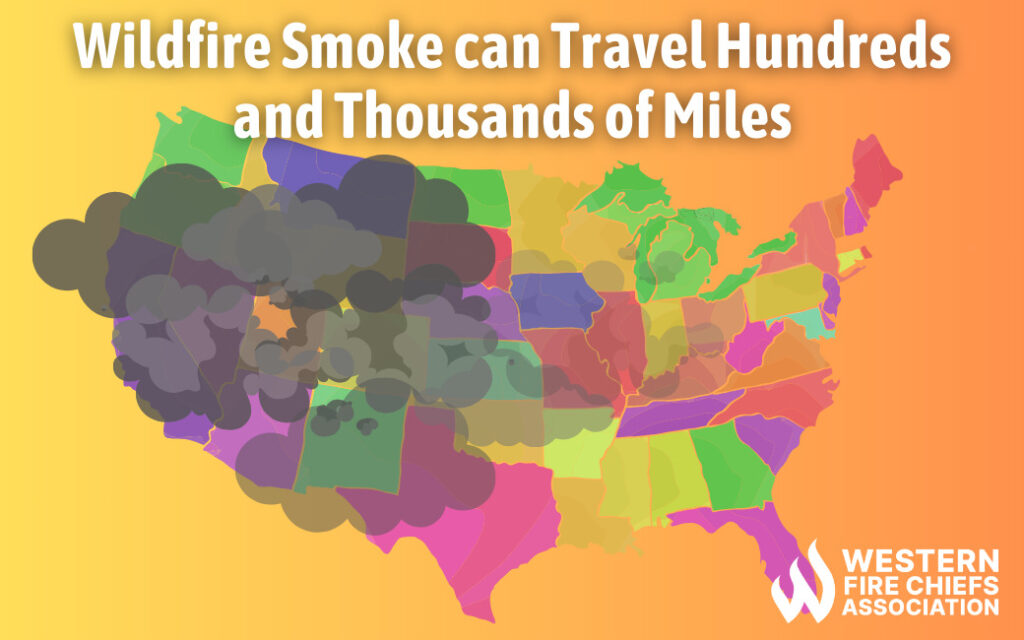Fire Pit Safety Tips
Stay safe around the campfire with tips from the Western Fire Chiefs Association. Learn essential precautions and practices for a worry-free outdoor campfire.
You might be surprised to learn how far wildfire smoke can travel. Discover how these smoke plumes can travel surprising distances, impacting air quality far and wide.
Published:November 7, 2023
Edited:March 1, 2024

You might be surprised to learn how far wildfire smoke can travel. Discover how these smoke plumes can travel surprising distances, impacting air quality far and wide.
Wildfire smoke can travel long distances, extending far beyond the immediate fire zone. Carried by prevailing winds, it can cover hundreds, or even thousands, of miles. This means that even if a community is not close to a wildfire, it may still be exposed to its smoke. The impact of wildfire smoke on your health can be significant, but understanding how smoke moves can help individuals know what to expect.
Although it depends on the wind pattern and atmospheric condition, wildfire smoke can travel hundreds of miles. This large coverage impacts air quality in areas far from the actual fire and can linger for weeks.1 The impact of wildfire smoke on one’s health can be significant. The small particles and chemicals in the smoke can irritate the eyes, nose, and throat, leading to symptoms like coughing, wheezing, and difficulty breathing. If an individual already has respiratory conditions, such as asthma, these symptoms can worsen. The fine particles in the smoke can penetrate deep into your lungs and even enter your bloodstream, potentially causing more serious health issues.5
Wildfire smoke is able to travel so far due to the smoke’s fine particles picked up by the wind and lifted into the atmosphere and pushed into surrounding areas, spreading the effects of wildfire to surrounding regions.
Wildfire fire smoke can ascend as high as 5 miles into the atmosphere1, reaching the troposphere which is the lowest part of the atmosphere where thunderstorms form.2 The specific height can vary depending on various factors, such as the strength of the fire, weather conditions, and the surrounding terrain. In some cases, smoke particles can reach the stratosphere, the layer right above the troposphere.3
How long smoke lingers in the atmosphere depends on several factors. Weather conditions, such as wind patterns and atmospheric stability, play a role in determining how quickly smoke disperses. Atmospheric Stability can cause vertical air motion, but it can also suppress this from happening.4 Moreover, the size and intensity of the fire can influence the duration of smoke presence. In some cases, smoke can hang around for days or even weeks, especially if there are no significant weather events like rain or strong winds to help clear it out.3 This can impact air quality and visibility in the affected areas.

While there are many varying factors to determine whether higher or lower elevations experience worse smoke conditions, smoke generally tends to rise and disperse as it moves higher in the atmosphere. This means that at higher elevations, the concentration of smoke particles may be lower compared to areas closer to the fire.6
However, it’s important to consider other factors as well, such as wind patterns, terrain, and the size and intensity of the fire. Temperatures can also impact the severity of smoke. In the morning, when temperatures are still low, winds are not typically as strong causing the smoke to settle. When temperatures rise during the day and winds are stronger, the smoke is able to disperse.7
Stay safe around the campfire with tips from the Western Fire Chiefs Association. Learn essential precautions and practices for a worry-free outdoor campfire.
Discover essential firework safety tips to ensure a dazzling display without accidents. Learn how to celebrate responsibly with expert guidance from WFCA.
Explore the role of AI in wildfire prediction with guidance from the WFCA. Learn how advanced algorithms and data analytics enhance early detection and response.